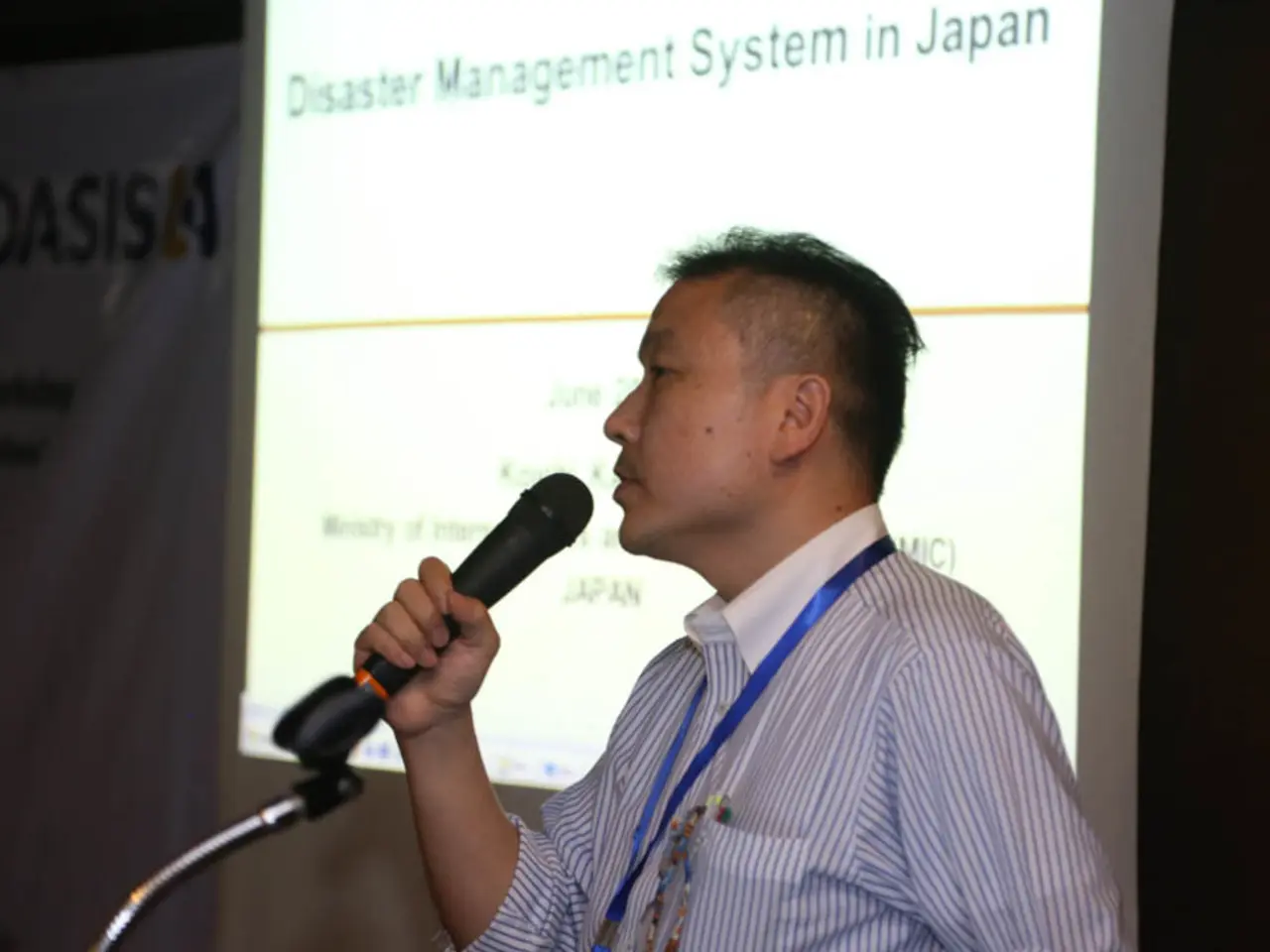Tsunami alerts issued after earthquakes hit Kamchatka region
Strongest Earthquake Since Fukushima Strikes Russia
On July 30, 2025, a powerful earthquake with a magnitude of 8.8 hit the eastern coast of the Kamchatka Peninsula in Russia, marking the strongest earthquake since the 2011 Fukushima (Tōhoku) earthquake [1][3]. This megathrust earthquake was the most powerful worldwide since 2011 and ranks among the strongest ever recorded by seismometers.
Impact and Damage
The earthquake caused moderate damage and multiple injuries in Kamchatka Krai and Sakhalin Oblast, Russia. One instance of localized destruction was a collapsed kindergarten wall, although no injuries were reported in that incident [1][2]. In Japan, one indirect fatality and 21 injuries were linked to tsunami-related evacuations [1].
A tsunami followed the earthquake, but it was weaker than initially feared, with waves generally around 1 meter or less in most locations. However, a locally high 19-meter wave run-up occurred on Shumshu Island [1][3].
The earthquake triggered volcanic activity, causing several eruptions in Kamchatka, including volcanoes dormant for centuries. This prompted evacuations of personnel in affected areas, but no immediate threat to settlements or tourists was reported [4].
Evacuations and Warnings
Tsunami warnings led to evacuations in parts of Kamchatka, the Kuril Islands, Japan, and U.S. West Coast areas including Alaska, California, and Oregon [2][3]. Evacuations were primarily precautionary measures related to tsunami threats and volcanic ash plumes [4].
Aftershocks and Continuing Seismic Activity
The earthquake was part of a sequence starting July 20 with smaller quakes. Numerous aftershocks of significant magnitude (up to M 7.5) are expected to continue for weeks [2][3][5]. The USGS forecast indicates a high likelihood of large aftershocks (M7 and above) in the first week following the mainshock, with seismic activity persisting over a longer period [5].
Geographic Extent of Effects
The tsunami warnings spanned the Pacific, reaching Japan, the Hawaiian Islands, and the U.S. west coast [3]. Recorded wave heights included about 1.7 meters in Hawaii and similar values along the western U.S. coast [3].
Additional Information
- China issued a yellow tsunami warning, expecting waves of 30 centimeters to one meter.
- The region is considered one of the world's most seismically active zones due to the convergence of the Pacific and North American tectonic plates.
- The state-run Russian news agency Tass initially reported the earthquake as 7.9 and later corrected it to 8.7.
- Several buildings in Severo-Kurilsk were flooded following a tsunami that occurred after the earthquake.
- Evacuations were also ordered in the affected areas of the U.S., including Hawaii.
[1] Japanese Meteorological Agency (2025). Kamchatka earthquake causes tsunami warnings and evacuations across the Pacific. Retrieved from https://www.jma.go.jp/en/earthquake/announce/20250730_000001.html
[2] United States Geological Survey (2025). Kamchatka earthquake triggers volcanic activity and tsunami warnings. Retrieved from https://www.usgs.gov/news/kamchatka-earthquake-triggers-volcanic-activity-and-tsunami-warnings
[3] BBC News (2025). Strongest earthquake since Fukushima hits Russia's Kamchatka. Retrieved from https://www.bbc.co.uk/news/world-asia-58086065
[4] Associated Press (2025). Kamchatka earthquake triggers volcanic eruptions, tsunami warnings. Retrieved from https://www.apnews.com/article/kamchatka-earthquake-tsunami-russia-volcano-geology-e43a9c0777b18502806b924f3f2a995a
[5] USGS Earthquake Hazards Program (2025). Kamchatka earthquake aftershocks and seismic activity forecast. Retrieved from https://www.usgs.gov/news/kamchatka-earthquake-aftershocks-and-seismic-activity-forecast
Living in the aftermath of the strongest earthquake since Fukushima, residents in the affected regions are turning to various health-and-wellness practices for coping, such as meditation, yoga, and the use of CBD products to manage stress and promote better sleep. Despite the earthquake’s impact on medical-conditions such as cardiac issues due to the sudden physical shock, experts recommend focusing on preventive measures for long-term health, such as maintaining a balanced diet, regular exercise, and sufficient rest.




